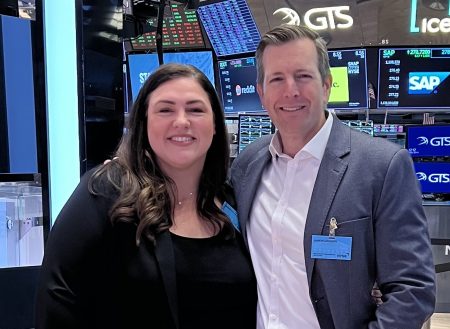How Trump’s New H-1B Visa Fee Could Reshape America’s Tech Landscape
In a move that has sent shockwaves through America’s technology sector, President Donald Trump announced an executive order on Friday that would impose a staggering $100,000 fee on H-1B work visas—the primary pathway for highly skilled foreign workers to join U.S. companies. This policy targets the visa program that has long been the backbone of talent acquisition for America’s tech giants and startups alike, allowing them to hire specialists in software engineering, data science, and other STEM fields where domestic talent gaps exist. The Trump administration frames this fee increase as a necessary measure to prevent abuse of the program while ensuring visas are reserved only for “the best of the best” international talent. However, the tech community has responded with immediate concern about what this could mean for American innovation and global competitiveness, especially as companies currently pay just several thousand dollars in government fees and legal costs per H-1B application—making this new surcharge an unprecedented financial burden.
The potential consequences of this policy shift have prompted stark warnings from entrepreneurs and venture capitalists who see it as potentially crippling for America’s innovation ecosystem. Manny Medina, co-founder of Seattle startup Outreach who recently relocated to London, offered a sobering prediction: “Now we’re making H-1B sponsorship prohibitively expensive, cities outside the U.S., like Toronto, Vancouver, and London will pick up the talent.” His message to founders caught in visa uncertainty was clear: “London’s doors are open.” The sentiment was echoed by Garry Tan, CEO of Y Combinator in San Francisco, who pointed out that while larger tech corporations might absorb such costs, emerging companies with limited funding simply cannot—”Early teams can’t swallow that tax.” This highlights a critical concern that the policy could disproportionately harm startups, which have historically been America’s engines of innovation and job creation, potentially forcing them to either forgo key talent or relocate to more immigration-friendly countries.
The implications for America’s technological leadership position could be far-reaching, according to experts like Xiao Wang, CEO of Seattle immigration startup Boundless. Wang articulated what many in the tech sector fear: “The U.S. has built its leadership in technology and innovation by making itself the destination of choice for the world’s top talent. Policies like this, alongside growing scrutiny of student visa applications, make it harder for bright, ambitious people to come here and put the United States’ standing as a global leader in innovation at risk.” This concern reflects a fundamental understanding within the tech industry that America’s dominance in technology has been built substantially on its ability to attract global talent—a competitive advantage that could be eroded if the barriers to entry become too high for skilled workers who have options to contribute their expertise in other innovation hubs around the world.
The impact of this policy would be particularly acute in tech-centered regions like the Seattle area, which has developed into a major hub for technology companies and has one of the largest Asian Indian populations in the United States. The region’s tech ecosystem is heavily dependent on the H-1B program, with Amazon and Microsoft ranking first and third nationally for H-1B visa approvals issued to employees this year—10,044 and 5,189 respectively. Other tech giants with substantial Seattle operations, including Meta, Apple, and Google, are also among the top ten employers of H-1B visa holders. The demographic significance is highlighted by reports that more than 40% of foreign-born IT workers in the Seattle area come from India. In response to Friday’s executive order, both Amazon and Microsoft quickly issued travel advisories to their visa-holding employees, instructing them to restrict international travel and return to the United States—an indication of how seriously these companies view the potential disruption to their workforce.
There remains significant uncertainty about how exactly this policy will be implemented and who it will affect. Reports from Axios suggest that the new fee would not apply to existing H-1B holders, which would provide some relief to current visa holders and their employers. However, the legal foundation of the executive order has been questioned by immigration experts. Boundless noted that new visa fees “can typically only be introduced either through legislation passed by Congress or through a formal rulemaking process that requires months of public notice and comment,” suggesting that legal challenges are likely to follow. Casium, another Seattle-area immigration startup, characterized it as “an evolving situation” whose real-world application will depend on how government agencies implement it, how courts respond to inevitable legal challenges, and whether additional clarifying guidance is released by the administration.
The controversy surrounding this executive order reflects a larger tension in American politics and economic policy regarding immigration’s role in technological innovation and economic growth. While the administration presents the fee as a protective measure for American workers, many in the tech industry view access to global talent as essential to maintaining America’s competitive edge. The outcome of this policy—whether it stands as announced, is modified through legal challenges, or leads to unintended consequences like accelerating the growth of tech hubs outside the United States—could significantly influence not only the composition of America’s tech workforce but also its future position in the global innovation landscape. As companies and individuals await clarity, one thing remains certain: the intersection of immigration policy and technology talent acquisition has become a critical inflection point for America’s innovation economy.















